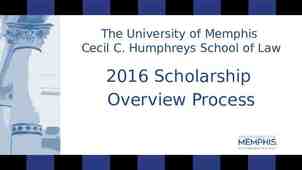Various levels Free trade area (FTA) – NAFTA Customs union (cu)
29 Slides278.50 KB
Various levels Free trade area (FTA) - NAFTA Customs union (cu) - 1 CET Common market - 4 freedoms Economic union - common policies Total integration
INTERNATIONAL ECONOMIC INTEGRATION REF:CU1A OCT 08 Note: You will have a copy of these slides with spaces for you to complete during the lecture
Customs Unions Trade creation / trade diversion Dynamic effects Terms of trade
Trade creation(TC) & Trade diversion(TD) CU initially regarded as move to free trade Viner (1950) : TC & TD Numerical example
Numerical example Home Partner RoW Price/cost ( ) Case1: trade creation tariff 30 Pre cu Post cu 50 40 30
Numerical example Home Partner RoW Price/cost ( ) Case1: trade creation tariff 30 Pre cu Post cu 50 40 30 50 70 60
Numerical example Home Partner RoW Price/cost ( ) Case1: trade creation tariff 30 Pre cu Post cu 50 40 30 50 50 70 40 60 60
Home Partner RoW Price/cost ( ) 50 Case2: trade diversion tariff 15 Pre cu Post cu 40 30
Home Partner RoW Price/cost ( ) 50 Case2: trade diversion tariff 15 Pre cu 50 Post cu 40 30 55 45
Home Partner RoW Price/cost ( ) 50 Case2: trade diversion tariff 15 Pre cu 50 Post cu 50 40 30 55 40 45 45
Assumptions (partial equilibrium analysis) – Partners (Sp) S/curve & world S/curve (Sw) infinitely elastic. Sw (efficient) below Sp – Domestic supply & demand (SH & DH) – Consumers don’t differentiate - origin of good – Home & partner small, CU small
CU theory note: model will differ if change assumptions Price Sp Sw SH DH Q good X
CU theory Price Phome Sp tariff P2 Sw tariff Sp P1 Sw SH DH Q good X
Pre CU Price Phome Area abcd ? Sp tariff b P2 c Sw tariff Sp P1 a Sw d DH SH Q2 Q1 Q good X
Post CU Price Phome Sp tariff P2 P3 P1 b c x y a d SH Q4 Q2 Sw tariff Sp Sw DH Q1 Q3 Q good X
Post CU Price Phome Sp tariff P2 c b Sw tariff W P3 P1 x y Sp Z a SH Q4 Q2 ve specialisation effect Sw d DH Q1 Q3 ve substitution effect Q good X
pre-cu PRICE P2 CONSUMPTION PROD(home) IMPORTS post-cu P3 Q1 Q2 Q1-Q2 Q3 Q4 Q3-Q4
Net gain TC x y – production gain x – consumer gain y – cost of trade diversion z W ? TD - z
Deductions Higher original tariff - greater potential benefits Smaller cost difference partner & RoW - likely TD losses lower Greater price elasticity DH & SH - TC likely Greater overlap of goods - bigger gains Bigger CU - TD less likely Low CET - TD less likely
Higher original tariff (compared to earlier diagram) - greater potential benefits Price TC TD in this example P2 Sw tariff y x Sp P3 Z P1 Sw SH Q4 DH Q2 Q1 Q3 Q good X
Remember: Previous diagram, showing TC TD Price Phome Sp tariff P2 c b Sw tariff W P3 P1 x y Sp Z a SH Q4 Q2 ve specialisation effect Sw d DH Q1 Q3 ve substitution effect Q good X
Empirical evidence Net result can’t be found from theory – empirical evidence (Nielsen) Balassa - 3 studies 1953-1970 – TC TD Others agree – Truman (1968), Kreinin (1970), Aitkin (1970) But: welfare trade flows?
Measurement – counterfactual analysis » project trends » control country » trade flow models Second best theory
Public goods argument for cu: Cooper & Massell (1965) & Johnson (1965) Industrialisation Bargaining strength Pragmatic argument for free trade Link with potential allies Skilled labour pool Reduce dependence on imports
Dynamic effects Ignored in previous (static) analysis Dynamic effects likely to result in major benefits – difficult to assess – orthodox CU theory concentrates on static benefits – can show welfare gains – consider redistribution to compensate losers
Dynamic effects – – – – – rise productivity technological advances concentration and market structures economies of scale economies of experience Above limited to dynamic sectors; regional variations!!
Terms of Trade (ToT) effect Important for a large CU Improvement in ToT increases welfare ToT - secondary objective Any ToT gain transferred from rest of world - not wealth creating effect
Further developments Common market theory New trade theories – based on industrial organisation theory – Includes consideration of » market structures » competition effects More recent research considers this – eg. Gasiorek, Smith, Venables, (JCMS 2002) consider the Uk’s entry into the EEC
Conclusion CU theory only deals with the relatively small ‘static’ effects of integration, but it is a starting point Empirical evidence from the formation of the EC6 seems to generally support CU theory – TC TD


































